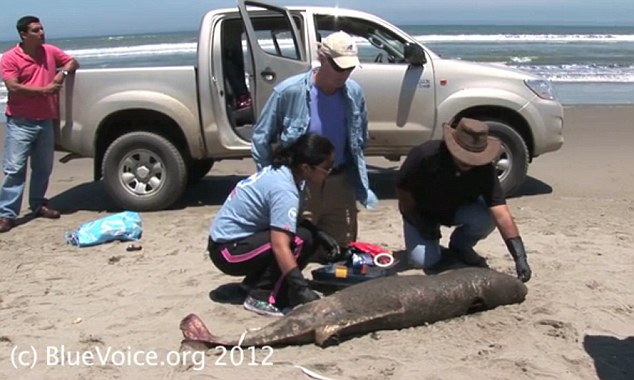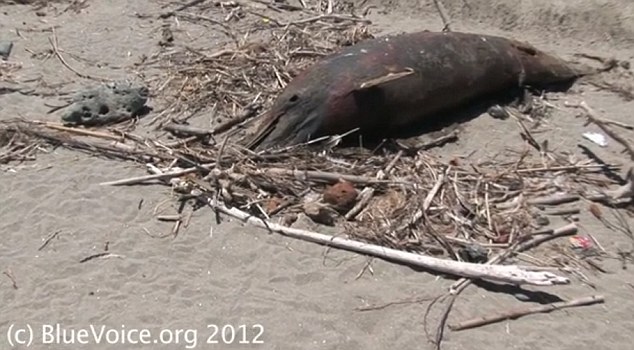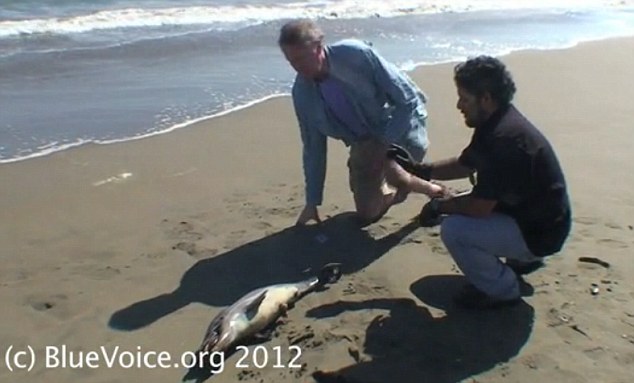Nearly 3,000 of the mammals are thought to have died this year so far, with 615 counted by conservationists along a 90-mile stretch of beaches near the city of Lambayeque on Wednesday.
Scientists in Peru are exploring the possibility the deaths were caused by sonar blasts used by firms to find oil under the sea. The method can damage dolphins' ears and cause disorientation and internal bleeding, experts warn.

Orca Peru expert, veterinarian Carlos Yaipen Llanos said that while 'we have no definitive evidence', he suspects the cause of death is a 'marine bubble', which occurs during mining exploration.
The bubbles are not visible to the naked eye but they can have an effect on dolphins, sea lions, and whales.
Head of conservation group BlueVoice.org Hardy Jones told MSNBC: 'It is a horrifying thought that these dolphins would die in agony over a prolonged period if they were impacted by sonic blast.'
Earlier this year federal regulators in the U.S. suspended similar testing in the Gulf of Mexico following sightings of dead and sick dolphins.

The ban is set to last until May, when the bottlenose dolphin calving season ends.
However Mr Llanos added that it is also possible the dolphins in Peru suffered from a disease outbreak.
British environmentalist Mark Simmonds of the Whale and Dolphin Conservation Society suggested that fishing nets may also be to blame.

The dead dolphins include babies and mothers who until recently were happily suckling, suggesting that healthy creatures were also affected.
Thousands of dead anchovies have also been washed up on the shoreline.



This is happening WORLDWIDE. Mass Sea Life Die Off. Whales, turtles, dolphins, seals and TONS of fish. Everywhere. Not to mention alot of birds dropping from the skies. They will not say the real cause of all of this. It's certainly not "man" made. One word best describes what's going on... EXTINCTION.